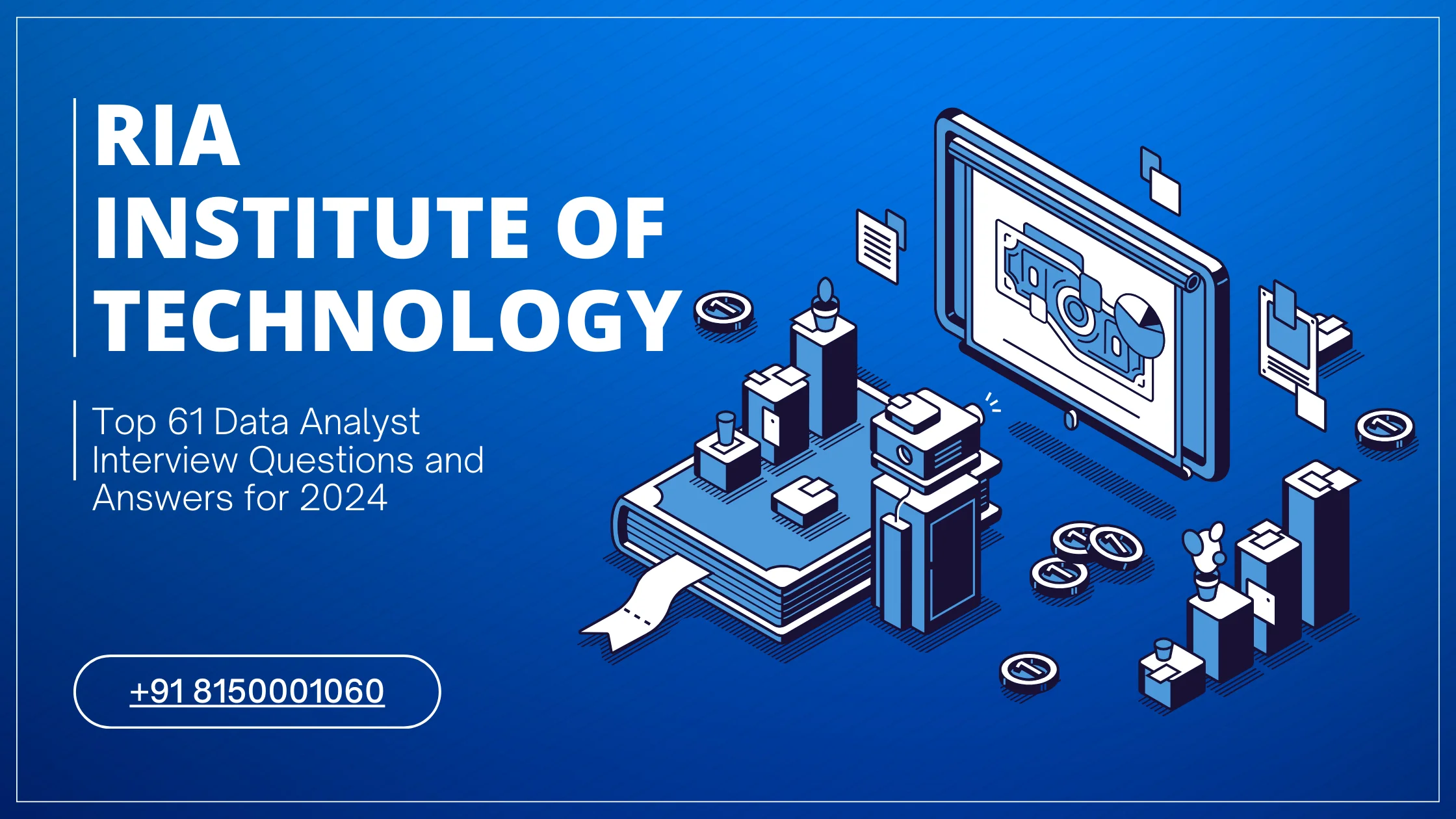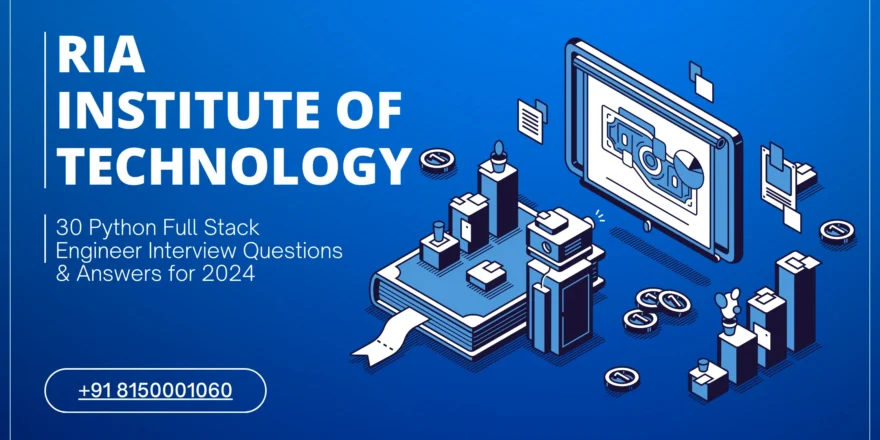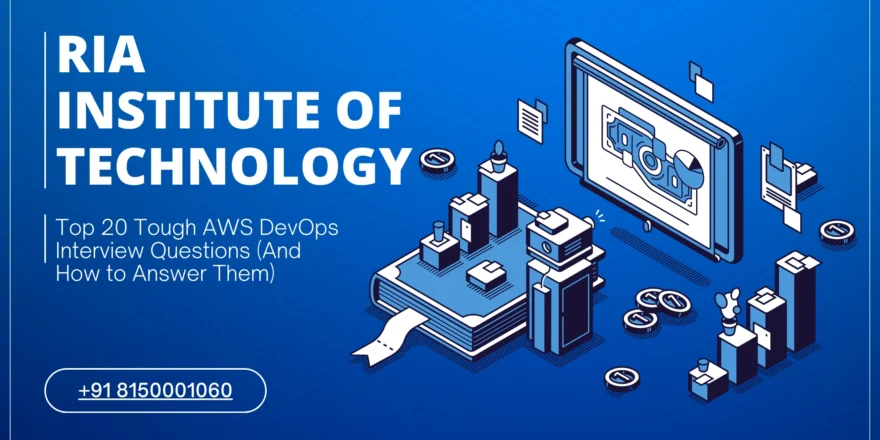Data Analyst Interview Questions:
Many companies, from marketing to entertainment, rely heavily on data analysts who can figure out complex data sets. The role of a data analyst has become essential across various industries. It’s crucial to master interview preparation to pass interviews. We know interviews can be stressful whether you are looking for a job as a data analyst in person or from home. This is mostly because you are afraid of what the interviewer will ask. Get ready to show off your skills if you want to work in this area.
To put your mind at ease, here is a list of the most popular interview questions for the job of data analyst.
1. What is SQL, and why is it important for data analysis?
SQL stands for Structured Query Language. It is used to query and manipulate data stored in relational databases. SQL is crucial for data analysis because it allows users to efficiently retrieve and organize data, making it easier to draw meaningful insights and make informed decisions.
2. What is the difference between SQL SELECT and SELECT DISTINCT statements?
SQL SELECT Statement: Retrieves data from a database.
SQL SELECT DISTINCT Statement: Removes duplicate entries from the result set.
3. How to join tables in SQL?
Tables can be connected in various ways depending on their relationship, including:
- INNER JOIN: Combines rows from two tables where the join condition is met.
- LEFT JOIN: Returns all rows from the left table and matching rows from the right table.
- RIGHT JOIN: Returns all rows from the right table and matching rows from the left table.
- FULL JOIN: Combines all rows from both tables.
4. What is the difference between GROUP BY and ORDER BY in SQL?
- GROUP BY: Converts rows with the same values into summary rows.
- ORDER BY: Organizes the result set based on given columns.
These SQL concepts are essential for data analysis and manipulation, allowing users to efficiently manage and analyze data to draw meaningful insights.
5. What are the main ideas behind showing facts visually?
Clarity, accuracy, efficiency, consistency, and aesthetics are some of the concepts of data visualisation.
6. What’s the difference between a histogram and a bar chart?
With its rectangular bars, a bar chart shows category data. A histogram, on the other hand, shows how the numbers are spread out by breaking them up into intervals and showing how often each interval happens with bars.
7.How do you select the right visualisation for various kinds of data?
The kind of data and the insights you wish to provide will determine which visualisation you choose. For instance, line charts can display patterns over time, and bar charts can compare category data.
8. What is the significance of the Central Limit Theorem?
Regardless of the form of the population distribution, the Central Limit Theorem states that as sample size rises, the sampling distribution of the sample mean approaches a normal distribution. It’s crucial because it enables us to extrapolate conclusions about the population from a sample.
9. Describe the idea of correlation.
The linear link between two variables is measured using correlation to determine its strength and direction. The scale goes from -1 to +1, with +1 denoting a perfect positive correlation, 0 denoting no correlation, and -1 representing a perfect negative correlation.
10. How are the mean, median, and mode calculated?
Summing and dividing by the total number of values yields the mean, which is the average of a set of numbers. In a sorted list of numbers, the middle value is called the median. The value that represents the mode is.
11. What distinguishes machine learning from conventional programming?
Without being explicitly taught, computers can learn from data and get better over time thanks to a subset of artificial intelligence called machine learning. The rules and logic are explicitly defined by the programmer in traditional programming.
12. Describe the distinction between learning that is supervised and that is not.
Training a model on tagged data with the provision of the proper output is known as supervised learning. Unsupervised learning, on the other hand, focuses on training on unlabeled data and identifying patterns or relationships within the data.
13. How can overfitting be avoided, and what does it entail?
When a model learns the training set too thoroughly—including noise and unimportant patterns—it is said to be overfitting, and this results in subpar performance on unobserved data. Overfitting can be avoided by using strategies like feature selection, regularisation, and cross-validation.
14. Tell me about a project you worked on and the deadline you had to meet.
We had a project with a tight deadline in my prior position. I set priorities for the work and assigned duties and had good communication with the team to make sure we completed the project on time without sacrificing quality.
15. How do you resolve disputes among team members?
I think that disputes should be resolved amicably and productively. I consider various points of view, find common ground, and strive for a resolution that meets the needs of all parties.
16. Give an example of a difficult issue you ran into during a data analysis project and the way you resolved it.
I came over a sizable data mismatch during a data analysis job that jeopardised the veracity of our findings. In order to guarantee data integrity, I carried out extensive data validation, worked with stakeholders to determine the underlying reason, and put corrective measures in place.
17. Assume you possess a customer transaction dataset. In what way would you divide up your clientele according to how they buy?
To determine prospective segments and comprehend the distribution of client transactions, I would conduct exploratory data analysis. After that, I would group clients based on commonalities in their purchase patterns using clustering techniques like k-means or hierarchical clustering.
18. It is your responsibility to forecast a retail store’s sales. Which course of action would you choose?
First, I would gather historical sales information along with other pertinent data, such seasonality, promotional activity, and economic conditions. Next, in order to estimate future sales, I would investigate forecasting models like ARIMA, exponential smoothing, or machine learning methods like random forests or gradient boosting.
19. Why and how is logistic regression applied?
A statistical technique for binary classification issues is called logistic regression. It makes predictions about a binary outcome’s probability using one or more predictor factors.
20. Describe the machine learning concept of feature selection.
In order to decrease overfitting and enhance model performance, feature selection is locating and choosing the most pertinent variables or features from a dataset.
21. Which benefits and drawbacks come with decision trees?
Benefits include the ability to handle both numerical and categorical data, ease of interpretation and visualisation, and reduced need for data pretreatment.
Cons: It is not appropriate for capturing complicated relationships and is prone to overfitting. It is also unstable when there are slight alterations in the data.
22. How should a dataset’s missing values be handled?
Imputation techniques like mean, median, or mode imputation, as well as more complex ones like k-nearest neighbours (KNN) imputation and predictive modelling, can all be used to deal with missing values.
23 .Describe the idea of outlier detection and how to find anomalies in a dataset.
Finding data points that differ noticeably from the rest of the data is known as outlier identification. Visualisation tools like box plots and statistical techniques like the Z-score or IQR (Interquartile Range) method are frequently used for outlier spotting.
24. What exactly is a data warehouse, and what makes it crucial?
A data warehouse is a centralised location where information from different sources is combined for reporting and analysis purposes. Enabling business intelligence and analytics and offering a uniform data view are critical.
25. Describe the ETL process (extract, transform, load).
Data must be extracted from source systems, formatted, and loaded into a target system or data warehouse for reporting and analysis. This process is known as enterprise transaction processing (ETL).
26. A dataset containing millions of rows is presented to you. How would you go about doing an analysis of this big dataset?
In order to comprehend the distribution of the data and spot any possible trends or insights, I would first conduct exploratory data analysis. Next, in order to evaluate the huge dataset effectively, I would use sampling strategies or make use of big data processing tools like Apache Spark.
27. How would you assess a prediction model’s performance?
Metrics like accuracy, precision, recall, F1-score, and ROC curve can be used to assess a predictive model’s performance in classification problems; for regression problems, metrics like R-squared, MAE, and RMSE (Root Mean Square Error) can be used.
28. Give an example of a situation when you had to influence organisational decision-making using data.
I used to study consumer feedback data to find places where product design might be improved. I gave the product development team my insights, and as a result, the features of the product were changed to better suit the needs of the target market.
29. How do you communicate intricate technical ideas to stakeholders who are not technical?
I make use of clear, understandable analogies as well as visual aids like graphs and charts. To make the technical concepts easily understood for non-technical stakeholders, I concentrate on the benefits and practical implications of the principles.
30 .Give an example of a time you had to report your results to a group or client.
I completed a thorough data analysis project and gave the top management team my findings. I developed a succinct and straightforward presentation that emphasised important findings and well-received suggestions that resulted in the application of workable tactics.
31. Which are the most important trends in the field of data analytics?
The expanding use of artificial intelligence (AI) and machine learning, the significance of data security and privacy, and the emergence of real-time analytics and edge computing are some of the major developments in the data analytics sector.
32. What changes do you anticipate for the future in the role of a data analyst?
A data analyst’s job is changing to become more strategic and team-oriented, with an emphasis on applying AI, machine learning, and advanced analytics to spur innovation and corporate growth.
33. How would you go about resolving a challenging data analysis issue?
I divide the challenge into smaller, more doable tasks, establish specific goals, collect pertinent data, use the right analytical methods, and iteratively improve the solution in response to comments and new insights.
34. Describe an instance where you had to use your imagination to overcome a problem with data.
I came across a problem with inconsistent data formats that impacted the processing of the data. I used Python scripts to standardise the data and came up with a plan for data cleaning and transformation that fixed the problem and increased the analysis’s accuracy.
36. How have you adjusted to working in a hectic workplace?
My ability to efficiently prioritise activities, keep organised, have open lines of communication with team members, and be adaptive to shifting demands and priorities all help me thrive in hectic work environments.
37. Tell about a time you helped out on a group project or initiative.
I worked on a data-driven project to enhance consumer segmentation with a cross-functional team. My contributions included data insights, the creation of predictive models, and the presentation of findings, which eventually resulted in more focused marketing campaigns and higher levels of consumer interaction.
38 .What exactly is data governance, and what makes it crucial?
Within an organisation, data governance pertains to the management and supervision of data availability, usability, integrity, and security. Ensuring data quality, adhering to rules, and facilitating efficient data-driven decision-making all depend on it.
39. In what ways do your data analysis initiatives maintain data security and privacy?
I protect sensitive data using encryption, access controls, and anonymization mechanisms in accordance with data privacy laws and best practices. In order to preserve data security and integrity, I also carry out routine audits and compliance checks.
40. Which computer languages can you use to analyse data well?
I am skilled in a number of languages that are frequently used for statistical analysis, machine learning, and data processing, including Python, R, and SQL.
41. In Python, how do you manage big datasets?
I utilise technologies like Dask or Spark for distributed computing and packages like Pandas for data manipulation and cleaning in order to efficiently manage massive datasets in Python.
42. Do you know of any tools for data visualisation?
Yes, I am skilled in using Tableau, Power BI, and Matplotlib in Python, among other data visualisation technologies, to produce engaging and intelligent data analysis visualisations.
43. Have you ever worked with AWS, Google Cloud, or Azure, or other cloud-based data platforms?
I’ve worked with cloud-based data platforms like Azure Machine Learning for deploying machine learning models, Google BigQuery for data querying, and Amazon S3 for data storage.
44. Let’s say you are handed a dataset that has a variety of data formats. How would the data be standardised?
To find and fix conflicting data formats, I would employ data cleaning techniques. For example, I would use regular expressions or string manipulation routines to standardise date formats, get rid of special characters, and convert text to uppercase or lowercase as appropriate.
45. Finding customer churn factors is your task. Which course of action would you choose?
Investigative data analysis is what I would do to find trends and patterns in consumer behaviour. After that, I would identify important churn factors and create ways to address them using predictive modelling approaches like logistic regression or decision trees.
46. How do you make sure stakeholders who aren’t technical can grasp the results of your data analysis?
I make use of succinct, straightforward language as well as visual aids like graphs and charts. To make the data analysis intelligible for non-technical stakeholders, I concentrate on its practical implications and actionable insights.
47. Tell about a situation where you had to explain intricate data analysis results to a non-technical audience.
I briefed the executive leadership team on the findings of predictive modelling research. I focused on the business effect and strategic suggestions drawn from the analysis in a condensed presentation that included visuals and key points.
48. How do you keep up with the most recent advancements and trends in data analytics?
I frequently take part in data analytics-related conferences, webinars, and online courses. To keep up with the newest tools, trends, and best practices, I participate in online communities, read blogs, and follow trade journals.
49. Do you have any topics in data analytics that you would like to learn more about or get better at?
In order to take on increasingly challenging data analysis tasks and take advantage of sophisticated predictive modelling capabilities, I am eager to improve my knowledge of machine learning algorithms and deep learning approaches.
50. How do you respond to criticism or comments on your work?
I see criticism as a chance to develop and get better. I pay close attention while others are speaking, ask questions when necessary, and take constructive criticism to improve the calibre of my work and my abilities.
51. Describe the dynamics of your ideal team and work environment.
My dream workplace is one that is inclusive and collaborative, where employees value and support one another’s talents, communicate honestly, and collaborate to achieve shared objectives with a strong sense of commitment.
52. Do you want to ask us any questions?
Yes, please tell me more about the company’s data architecture, the kinds of projects that the data analytics team is working on right now, and how a data analyst’s function fits into the broader strategy and success of the business.
53. What drives you to perform data analysis?
The chance to use data-driven insights to address challenging issues, spur creativity, and enhance customer satisfaction and corporate success excites me.
54. What data analytics-related job ambitions do you have?
In the field of data analytics, I hope to further hone my technical abilities, obtain expertise in managing intricate projects and interdisciplinary teams, and use data-driven insights and solutions to support strategic decision-making and corporate expansion.
55. How do you manage deadline pressure or stress?
I prioritise activities, keep an optimistic outlook, ask for help from team members when necessary, and concentrate on solutions and ongoing progress to effectively address obstacles in order to manage stress and meet deadlines.
56. Could you give an example of a well-executed data analysis project that you worked on?
Of course! For a retail client, I oversaw a data analysis project that optimised inventory management and had positive results: a 15% increase in inventory turnover and a 20% decrease in stockouts, which enhanced profitability and satisfied customers.
57. How do you manage conflicting requirements or competing priorities in a project?
I manage conflicting priorities by being clear about what is expected of me, establishing priorities based on importance and urgency, working with stakeholders to come up with solutions that work for everyone, and being flexible and resilient in the face of shifting requirements.
58. As a data analyst, what are your advantages and disadvantages?
Strong analytical abilities, meticulous attention to detail, and the capacity to convert complicated data into useful insights are some of my advantages as a data analyst. Regarding my shortcomings, I’m constantly honing my programming abilities and keeping up with the newest data analytics tools and technologies.
59. How do you go about picking up new skills or technologies?
In order to strengthen my comprehension and competency, I approach learning new technologies by establishing clear learning objectives, looking for high-quality materials and tutorials, practising hands-on exercises, and applying new information to real-world tasks.
60. Give an example of a scenario in which you had to work with a team member who had a different working style or viewpoint.
I worked on a cross-functional project with a team member from a different department. Although our approaches to problem-solving were originally different, we were able to use our varied viewpoints to come up with creative ideas and complete the project successfully.
61. Which fundamental characteristics do you think a competent data analyst should have?
Strong analytical and problem-solving abilities, meticulousness, good communication and presentation skills, flexibility with new technologies and methods, and a desire for ongoing learning and advancement in data analytics are all necessary for success as a data analyst.






